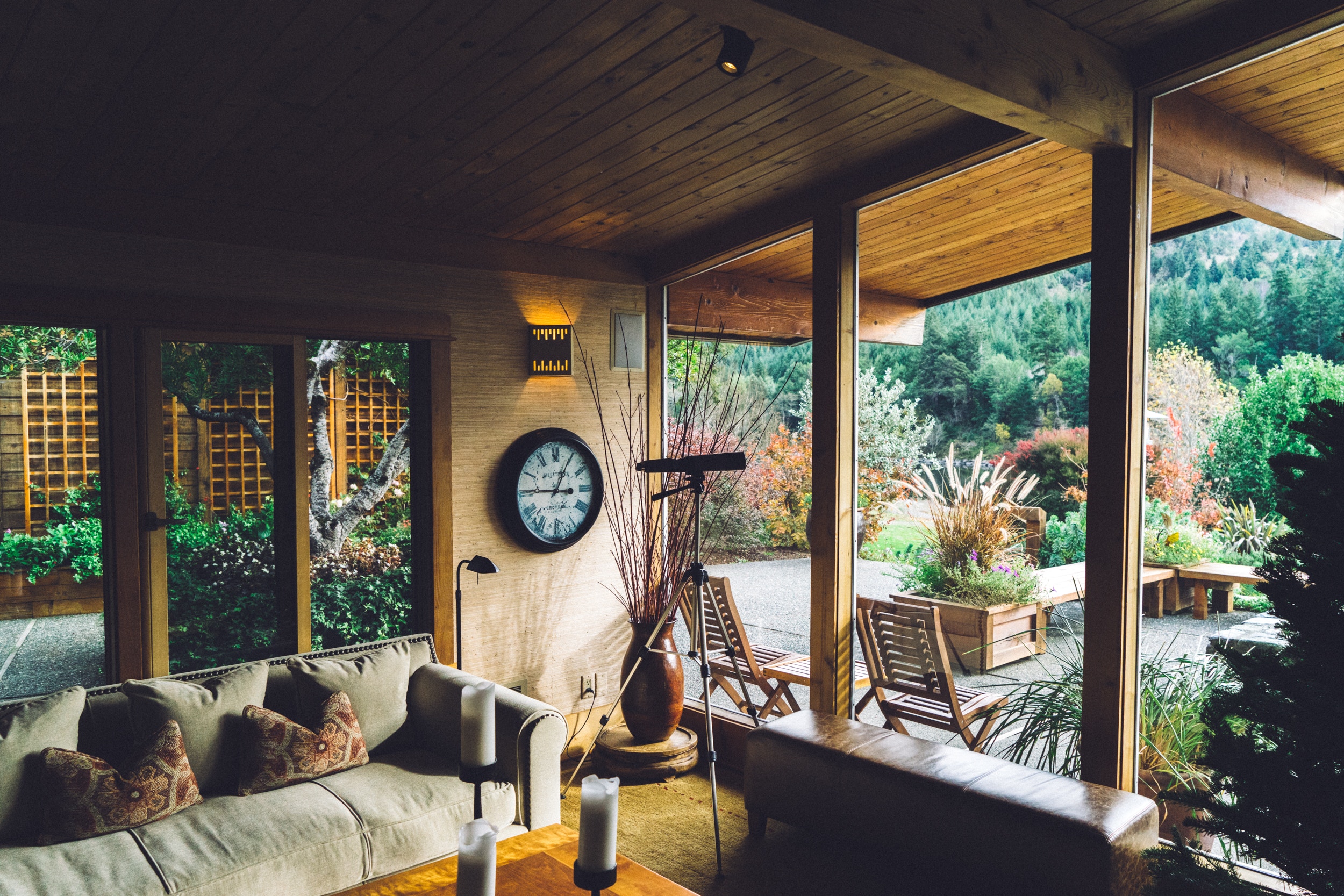Author: Igor Nastaskin
7 Tips for Selling Your Home in the Fall
Spring and Summer might be the top home-selling seasons, but Fall also is a great time to sell your home because there’s typically less competition and the market is still very active. So, if your house is on the market right now, consider giving it an autumn upgrade with these staging suggestions from Realtor.com. Focus on curb appeal To get off on the right fall foot, place a few potted mums in seasonal colors near the door, and then add a simple, natural wreath. A wheelbarrow piled with pumpkins also is a nice accent, but make sure they aren’t being eaten by squirrels or starting to rot. Complete the vignette with a cute fall-themed doormat and shiny light fixtures. Finally, be sure to take care of any errant foliage before potential buyers arrive. Think autumn, not Halloween While autumn seems to be fairly universally loved, not everyone celebrates Halloween or will enjoy a scary Halloween-themed house. If you just can’t resist veering toward the holiday, at least choose cuter, friendlier Halloween décor, like decorated or carved pumpkins, candy corn and friendly ghosts. Cobwebs, however, are a no-go. Swap out summer hues with autumnal tones If summer is all about bright popsicle tones or beachy blues, autumn is associated with warmer neutrals—think deep reds, burnt oranges and golden yellows reminiscent of the shades of fallen leaves. Sprinkle these warmer tones around your house in your table décor, kitchen and bath towers, accent rugs and art. And always make sure the new colors complement the existing palette. Embrace cozy Give your house an autumn vibe by warming up couches and chairs with comfy throws, blankets and pillows in autumnal tones and textured fabrics such as chenille, herringbone, or corduroy. Swap out airy summer sheers for more substantial drapes or shutters, and trade a summer sisal or jute rug for a wool area carpet. Light a fire, if possible, and make sure there are plenty of candles adorning the tables and counters. Finally, don’t forget to turn on extra lamps. Appeal to buyers’ sense of smell While baking a pie in the oven might be an overused home-selling trick, there’s no better time to do so than fall. Scents of cinnamon, apple and pumpkin spice will all help potential buyers picture themselves baking up something luscious. If baking up a treat isn’t your style, add scents around the home via spice-scented candles, oil sticks or potpourri. Surprise your visitors with something sweet Consider placing a simple cylinder filled with candy corn or other colorful fall candies on a buffet. And probably no one—even those who might not be big Halloween fans—will mind if you put out a bowl of fun-size candies, ready for trick-or-treaters as well as home buyers. Set the table for a feast With Thanksgiving right around the corner, families likely will be thinking about gathering loved ones around, maybe even in the new home. Appeal to this dream by setting the table as though you were expecting a large group for a sumptuous feast. Go big with china and crystal and fall-hued place mats and chargers, and dress the table with a runner accented with a fall-themed centerpiece.
Old House Versus New House: Which Is Better to Buy?
If you’re shopping for a place to live, this may be one of your primary decisions. Is it better to buy brand-new? Or do homes, like wine, get better with time? It turns out there is no one-size-fits-all answer, but there are distinct pros and cons to each purchase. That means your final answer may boil down to a personal preference. Here, Realtor.com tells you what to keep in mind when you’re trying to decide whether an old house or a new house is right for you. Upfront costs: How much house can you afford? New may be nice, but you pay for all that shiny newness. According to recent home price figures, the median cost of a new home is $335,400. Meanwhile, the median cost of an old home—often called an “existing home” in real estate terms—is only $240,500. In other words: You’ll pay almost $100,000 (or 30 percent) more for a new home. That’s a sizable price hike. However, that money you save buying an old home may not remain in your pockets that long, since old homes often are less energy-efficient—and thus will cost more to heat and cool. And sooner or later, something is bound to break down, too. Maintenance: Love it or loathe it? Old houses come with an inevitable need for repairs, replacements, and upgrades. New homes should be worry-free for several years, with a brand-new hot water heater, HVAC system and roof all but ensuring no major out-of-pocket expenses for at least eight to 10 years in most cases. If you’re seeking a life with fewer hassles, or don’t have money in reserve for emergency repairs and unexpected expenses, a new home may be the way to go. With a recently built home, you’ll have peace of mind that all systems are new, up-to-date and there are no problems that could come down the line. Some of those issues can be pretty drastic. For instance, if you’ve never heard about knob-and-tube wiring—commonly found in older homes—look it up. Then look at the cost to have it fixed or replaced. If you do go ahead and pursue the purchase of an aging home, it’s especially important to have a thorough home inspection. Doing so won’t just help you negotiate down the price, but give you an idea of all the problems that need to be fixed. And then you actually need to fix them. A small repair now may save you an extensive overhaul down the road, especially in the case of drainage, roof, windows, doors, and trim. Plus, if you decide to sell your house again, those same old issues will no doubt pop up again during the next home inspection. Investment: Want a proven track record, or are you willing to take a risk? A home isn’t just a family gathering space, but a financial investment. And with an older home, you can see on paper just how much the property has appreciated through the years. Although that doesn’t ensure future market appeal, at least you have something to go on. As for a new home? With no history to look back on, this purchase can be considered more of a gamble. The price could shoot up, or it could plummet. But in case things go south, there is this one silver lining. You’ll have less work to do in terms of making sure the home offers what the market demands in terms of energy-efficiency, design and other amenities. Home design: Dig vintage or modern? Looks matter a lot when it comes to choosing a home, and both old and new homes have their fans. With an older home, you’ll likely get some sense of historic tradition and thoughtful attention to detail. Think crown molding, real hardwood flooring, and if you’re lucky, a secret back staircase or dumbwaiter. On the other side of this debate, brand-new houses often sport the latest and greatest—for example, open living spaces with wide, accessible hallways and bathrooms and kitchens with energy-efficient, on-trend amenities. Can you get the best of both worlds? Want modern amenities, but maybe not in a brand-new home? You do have an option: Buy an older home with good bones and take the opportunity to renovate it or hire someone to do it. In other words, you may not have to choose between an old house versus a new house after all.
14 Factors That Can Stall the Mortgage Closing Process
You’ve found your dream home and your purchase offer has been accepted. Now you have to get through one more step before you move in: mortgage closing. The time it takes to close on a home will vary from one person to the next, but when everything goes right, loan closings can be completed in as little as 21 to 28 days. However, not everything always goes according to plan. Issues can arise that can keep you from settling into your new place for weeks and sometimes months longer than you expected. Here, Realtor.com discusses some of the most common pitfalls that can delay the mortgage closing process. 1. Expensive purchases for your new home Don’t make any pricey purchases with your credit card before closing on your house because it could prevent you from qualifying. After an offer on a house is accepted, some people may be tempted to buy a new sofa, dining set or another expensive piece of furniture. However, real estate experts warn that this could be disastrous. Right before closing, the mortgage lender will pull the buyer’s credit to make sure nothing has changed. If a big purchase shows up, that could become an issue because it means that the buyer is taking on more debt. 2. Death of the original homeowner If there has been a death associated with the desired property, the home may need to go through probate court first to authenticate the former owner’s last will and testament. If that’s the case, your closing will be delayed. In some states, probate can take anywhere from a few months to a few years. 3. Homeowner’s association issues If the previous homeowner has outstanding homeowner’s association fees or fines, this could cause delays. In some cases, you may be able to negotiate those fees with the seller; otherwise, you will be responsible for paying them. 4. Verification problems In some instances, the borrower’s landlord, mortgage company, employer or source of down payment might not be willing to provide verification in a timely manner. Their failure to move quickly can slow you down. 5. Down payment issues There are times when the lender may require the home buyer to put down more cash; this may take time, especially if the buyer lacks the extra funding. 6. Lender may need additional information In some cases, additional info may be requested late in the process. Other times, the lender may misplace a document that will need to be obtained again. 7. Scheduling problems One party—whether the closing agent, attorney, title company representative, lender, buyer or seller—may not be available to meet on the closing day, which can push back timelines. 8. Buyer delays Additional documents sometimes are required if a buyer is self-employed. If the buyer has multiple sources of income, this may need to be documented and verified as well. If the buyer is receiving a down payment from an unconventional source or a gift, this also could slow down the process. 9. Flood insurance requirement If your new home is in a flood zone, you might need to get flood insurance. This may require a benchmark survey, which can take three weeks in some markets. Then it must be reviewed by the mortgage underwriter (the person who approves your loan). Flood insurance, and even homeowner’s insurance, also can sometimes be difficult to obtain, depending on your past history with claims, credit and location. 10. Appraisal disparities Before a mortgage is ever approved, the bank must first appraise the home. If the appraisal comes in low, it may take some time to renegotiate the asking price of the home. 11. Title issues In some cases, a tax lien against the property might need to be resolved before moving forward with the closing process. Other times, the title may have the incorrect signature or attestation. 12. Property damage If there is any type of damage to the property, the lender may require repairs before closing. 13. Contract disagreements The seller sometimes might not agree to the buyer’s contract requests (such as including the entire contents of the home in the deal). This can kill the transaction, or require further negotiation between the agents and other parties involved. 14. Foreclosure If a homeowner is in foreclosure, it can take up to 10 days to get a payoff from the mortgage company. This often includes legal fees.








